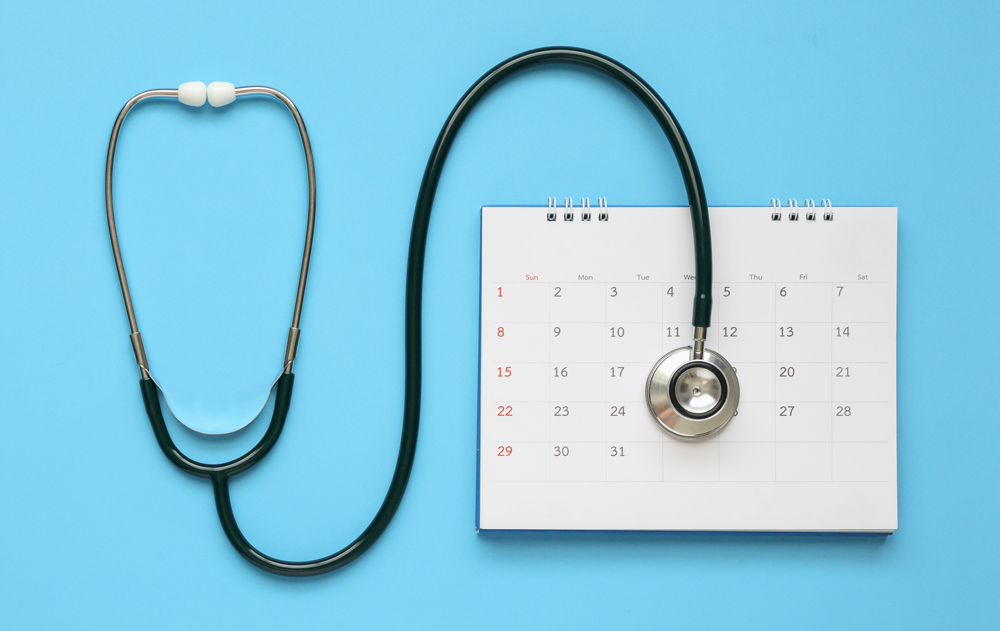
If you’ve tried to schedule a doctor’s appointment recently, you might have had to flip your calendar to a different season. There simply aren’t enough physicians in the U.S.: By 2037, the deficit is expected to reach 187,130 doctors, including more than 8,000 cardiologists and 4,000 nephrologists. That means patients routinely wait a long time—an average of 38 days, according to some data—before they’re able to snag an appointment with a doctor they really need to see.
[time-brightcove not-tgx=”true”]
“People are constantly trying to get in to see doctors,” says Dr. Gerda Maissel, a physician in New York’s Hudson Valley who works as a patient advocate and helps people navigate the health care system. She once worked with a man who wanted to see a specialist at a major academic center about his worsening neurological disease. After he accepted an appointment 10 months down the road, “he and his wife were just beside themselves,” she recalls. “He had a tremendous need, and the academic center was just like, ‘Yeah, sorry, everybody wants [that specialist].’” Thousands of different versions of that story unfold every single day for patients across the country, she says.
Long waits for necessary care can add emotional distress during an already stressful time—plus, of course, open the door to symptoms that aren’t caught or treated in time. Fortunately, patients can sometimes take steps to get in sooner. We asked experts to share their favorite hacks to see a specialist as soon as possible.
Find out if the office has multiple locations
Many doctors see patients in a variety of locations—some of which are busier than others. Always ask for the wait time at alternative locations, advises Sara Mathew, associate director of research and operations administration at Weill Cornell Medicine, where she leads the surgery department. Mathew thinks about health-care wait times constantly, both as an administrator and as a patient, and has found traveling slightly farther away can be helpful. When she recently tried to schedule an OB-GYN appointment in Manhattan, for example, she was told the next available slot was a year out. So she asked if there was anything available sooner—and the doctor’s office told her that if she was willing to travel to the Upper West Side instead of the East Side, she could be seen in two months. Flexibility is your friend when you’re in a hurry to see a doctor.
Make sure you’re on the cancellation list
Not every medical office automatically adds patients to the cancellation list. If you want to be notified if an earlier appointment opens up, let the receptionist know—and make it a point to flag that you could drop everything and be there with little notice, if that’s in fact the case, says Christina Robertson, a regional director for Reproductive Medicine Associations, where she oversees the patient scheduling team. “Ask their percentage of cancelled appointments,” she suggests, as well as whether those cancellations usually happen the same day or a few days in advance. That information can help set your expectations.
Read More: 8 Symptoms Doctors Often Dismiss As Anxiety
If the office where you’re trying to get an appointment doesn’t have a cancellation list, call and check in frequently. “I knew somebody who called every day,” Maissel says. You run the risk of annoying the scheduler, she acknowledges, but you’ll also stay front of mind. “It’s communicating what you would like, and if you’re not quite getting it, then nicely popping up again and asking for it.”
Ask your referring doctor to call on your behalf
Depending on the severity of your situation, your primary care physician or other referring doctor could make a call on your behalf. Sometimes, that extra step will encourage the specialist’s staff to squeeze you into the schedule, which might mean before or after typical clinic hours, Mathew says. “I wouldn’t abuse that for every kind of diagnosis,” she says. “But if you went for a routine GI checkup and they noticed something on your gallbladder or colon, and there’s a possibility it could be cancer, find every way to get in faster. You definitely want to know if you have something like that sooner, so you can be treated faster.”
Make a personal plea
Nicoletta Sozansky’s daughter was born needing life-saving surgery, which she received in Florida. When the family returned to their home in New Jersey, they wanted their daughter to see a pediatrician who specialized in complex care. None of the doctors they shortlisted were accepting new patients—or, they had impossibly long wait lists.
So Sozansky, a patient advocate and founder of the concierge health care navigation company Healthcare Redefined, called each doctor’s office and requested to speak to a practice manager. These staffers tend to be empathetic, she’s found, and are more inclined to offer empty slots to people they’ve connected with on a personal level.
Read More: Long Dismissed, Chronic Lyme Disease Is Finally Getting Its Moment
After introducing herself, Sozansky asked if she could write an email to the specialist, explaining her daughter’s medical history and making the case for an appointment that wouldn’t require waiting many months. It worked: “This letter opened the door to every pediatrician we reached out to,” she says. “From what I’ve experienced, doctors who are treating complex cases like your stories. They like a challenge.”
Be clear about your needs
When you’re trying to schedule an appointment, clearly state whether you’re seeking a new diagnosis or already have one and are looking for treatment or a second opinion. Diagnostic appointments tend to be more time-consuming, Sozansky says, so it might be easier to grab an appointment if you simply need to start a treatment plan. It took her years to be diagnosed with mast cell activation syndrome, for example, but once she knew what she was dealing with, appointments became much shorter and more readily available. “When I was switching from one doctor to another, the helpful thing was that I already had the diagnosis, and I could say, ‘Hey, I would love to get on the schedule,’” she says. “It’s much easier to convince the front desk.”
Consider providers who aren’t doctors
Keep an open mind about whether you’re willing to see another type of provider—like a nurse practitioner or physician’s assistant—who typically has greater availability. Every office works a little differently, Maissel says: In some, these providers are “very much like an extension of the physician,” she says. They’ll collaborate closely with the doctor to figure out how to best treat you. In other offices, they operate more independently.
Read More: What to Do If Your Doctor Doesn’t Take Your Symptoms Seriously
“In general, if I have to choose between waiting six months or seeing the NP next week, I’m going to see the NP next week,” she says. “And then I’m in the practice, and if I make friends with that NP, I can say, ‘I’m really worried about this thing that you’ve told me you’re not sure about. How do I get in to see Dr. Jones?’” The nurse works with the doctor every day, she points out, and has insights into their schedule—which means they could help facilitate more rapid care. Plus, providers like physician’s assistants can get crucial testing started, Maissel adds, and often have more time than physicians to spend addressing your needs.
Ask the receptionist for their ideas
If the next available appointment requires an unbearably long wait, politely tell the scheduler instead of hanging up the phone and grumbling, Maissel advises. “It’s fine to say, ‘Oh, gosh, that’s too far out,’” she says—but be mindful of your tone: “It’s not exactly what you say; it’s how you say it.” Barking at the scheduling team won’t do you any favors. But if you make it clear that you know the lack of appointments isn’t their fault, you might find they’re willing to brainstorm with you. Ask them if they have any suggestions, she suggests, and perhaps they’ll recommend calling a different office or will identify another doctor with more availability. “Most people want to be helpful,” Maissel says. “Most people in health care are there because it’s a mission-driven thing to do.”
Be nice
Not being able to see a doctor as quickly as you want to—or need to—can feel maddening. But it’s essential to not let your emotions get the best of you when you’re trying to schedule an appointment. “Be nice to the scheduler,” Maissel urges. “Despite what they say, they may have a little bit of discretion—so you want them to know, like, and think of you.” Asking how their day is going, and remaining positive while you talk, can go a long way.
And remember: Physicians are typically doing their best to see as many patients as possible, as quickly as possible. Some are simply so specialized that they’re in impossibly high demand. “It is truly hard to accommodate,” Mathew says. “I rarely see any of our surgeons sitting. They don’t end up taking lunch, and they see as many patients as they can. Just be mindful, and explore the possibilities.”



